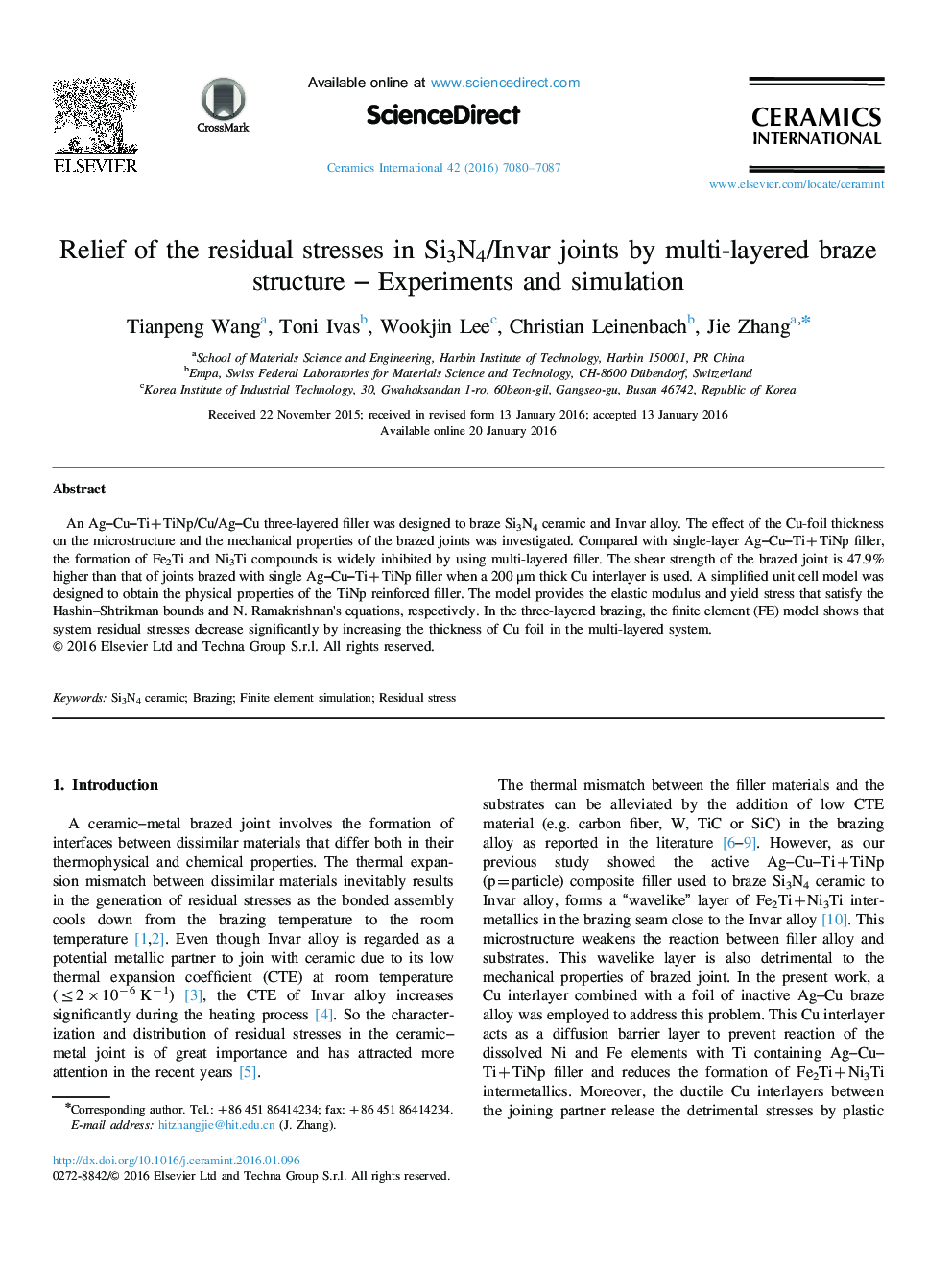| Article ID | Journal | Published Year | Pages | File Type |
|---|---|---|---|---|
| 10624287 | Ceramics International | 2016 | 8 Pages |
Abstract
An Ag-Cu-Ti+TiNp/Cu/Ag-Cu three-layered filler was designed to braze Si3N4 ceramic and Invar alloy. The effect of the Cu-foil thickness on the microstructure and the mechanical properties of the brazed joints was investigated. Compared with single-layer Ag-Cu-Ti+TiNp filler, the formation of Fe2Ti and Ni3Ti compounds is widely inhibited by using multi-layered filler. The shear strength of the brazed joint is 47.9% higher than that of joints brazed with single Ag-Cu-Ti+TiNp filler when a 200 μm thick Cu interlayer is used. A simplified unit cell model was designed to obtain the physical properties of the TiNp reinforced filler. The model provides the elastic modulus and yield stress that satisfy the Hashin-Shtrikman bounds and N. Ramakrishnan׳s equations, respectively. In the three-layered brazing, the finite element (FE) model shows that system residual stresses decrease significantly by increasing the thickness of Cu foil in the multi-layered system.
Related Topics
Physical Sciences and Engineering
Materials Science
Ceramics and Composites
Authors
Tianpeng Wang, Toni Ivas, Wookjin Lee, Christian Leinenbach, Jie Zhang,
